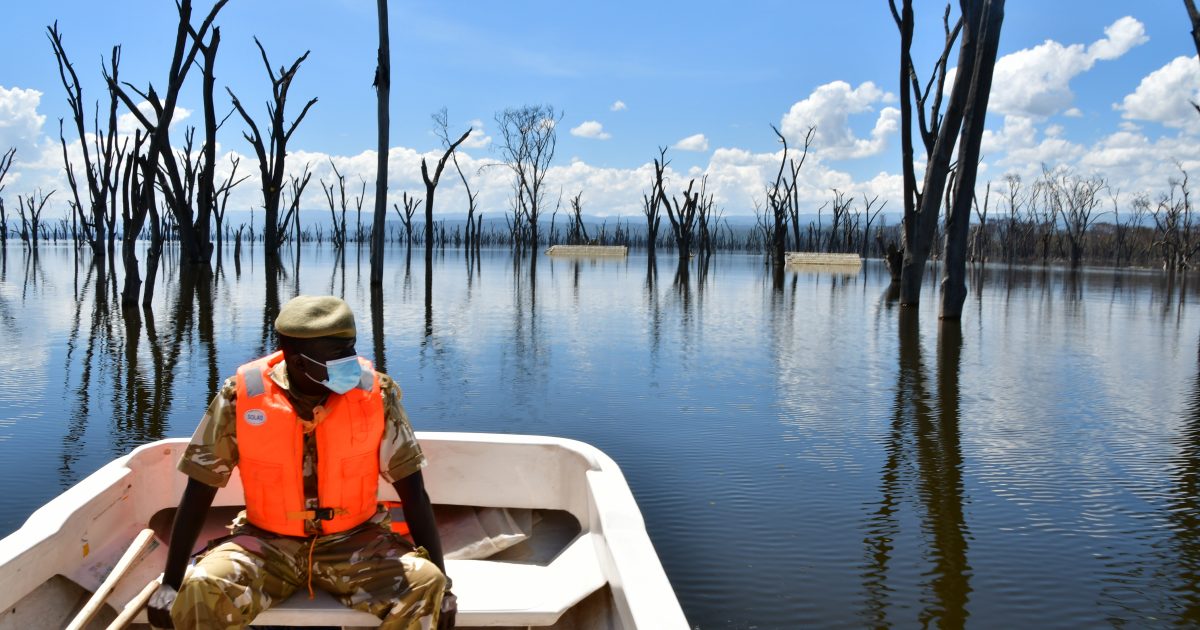As the countdown to World Wildlife Day celebrations enters its homestretch, the Kenya Wildlife Service (KWS) has rolled out an ambitious initiative to create awareness on communities’ key role in conservation of lakes and rivers in Nakuru County, as more than 70 per cent of their ecosystems lie outside protected areas.
KWS has indicated that educating communities residing in water catchment areas, near the lakes’ shores and along the rivers’ courses on the value of natural resources would motivate Kenyans to act and ask national and county governments to enforce environmental laws and do their part in conservation.
Nakuru KWS County Warden Cheruiyot Chepkwony said the move was motivated by various scientific findings that have identified Lakes Nakuru, Naivasha, and Elementaita as the country’s leading wetlands currently facing major challenges.
According to Chepkwony, the three lakes which have been declared United Nations Educational, Scientific, and Cultural Organisation (UNESCO) World Heritage Sites are reeling under massive pollution, human encroachment, abstraction, and climate change.
Other natural resources exposed to similar existential threats, according to the County Warden, include Rivers Njoro, Makalia, and Enderit that drain into Lake Nakuru, the rivers Malewa and Gilgil; the seasonal Karati river, which flows into Lake Naivasha; and the rivers Mereroni, Mbaruk, and Kariandusi, which stream into Lake Elementaita.
KWS has also identified population pressure coupled with changes in land use as perils facing nearly all the wetlands in the devolved unit.
Lake Naivasha is saddled with pollution and water abstraction from nearby farms, while effluent from the River Njoro, industrial runoff, and plastic waste are finding their way into Lake Nakuru.
On the other hand, Lake Elementaita is threatened by pollution and encroachment by major tourism facilities.
“Our human life is dependent on nature, and we have embarked on teaching the community, industrialists, hoteliers, and learners from the primary school level that abusing it is digging a grave for ourselves,” said Mr. Chepkwony.
The County Warden added that the campaign, while incorporating clean-up exercises of the natural ecosystems around the water bodies’ basins and catchment areas, is also creating awareness among indigenous communities to at least know the economic value of nature as a motivation to consciously use natural resources sustainably.
The initiative that is being carried out through public barazas and lectures in educational institutions incorporates pollution prevention and sustainable consumption behaviour guidance, aimed at shaping community perceptions of the dangers of environmental degradation pollution and available solutions, thereby empowering more people to act responsibly.
“For instance, we are training the community members to do their part by reducing our use of single-use plastics, recycling, and supporting businesses that prioritise environmental sustainability,” explained the warden.
In implementing the drive, KWS has brought on board several stakeholders, including the County Government, research agencies, entrepreneurs and workers in the hospitality and tourism industries, learning institutions, environmental conservation lobby groups, and environmental scientists, among others.
The initiative will also rope in industrial concerns; retailers and manufacturers, as Mr. Chepkwony stated, also have a crucial role to play in this effort, adding that business operations should be cognizant of the fact that their operations contribute to this problem and take steps to reduce pollution of the Lakes’ ecosystems.
He said they were working with the County Government and authorised waste management agencies to address poorly handled domestic waste and oil residues from car wash facilities that ultimately end up in the water bodies.
At public barazas, the initiative aims at promoting proper agronomical practices among both small-holder and large-scale farmers by promoting minimal use of fertilisers and pesticides in agriculture and landscaping to prevent nutrient and chemical runoff into the lakes and replace chemical fertilisers and pesticides with sustainable methods like organic farming.
It is also encouraging proper disposal of household chemicals, pharmaceuticals, and hazardous materials to prevent them from finding their way into water bodies.
Mr. Chepkwony observed that World Wildlife Day, which will be marked on March 3, 2024, was an opportunity to celebrate Kenya’s many beautiful and varied forms of wild fauna and flora and to raise awareness of the multitude of benefits that their conservation provides to people.
The event, whose theme will be ‘Connecting People and Planet: Exploring Digital Innovation in Wildlife Conservation’, was first celebrated in 1945.
Lake Nakuru is home to over 450 bird species, including flamingos that famously form a pink ribbon around the lake shore, attracting thousands of visitors to Nakuru County annually.
Over the years, thousands of flamingos in the lake have migrated to other lakes, including Lake Bogoria in Baringo County and Lake Natron in Tanzania.
Mr. Chepkwony affirmed that industrial pollution by the nearby Mwariki sewerage treatment plant and through the rivers that feed into the lake must be stopped to save the renowned lake.
He expressed regret that a cocktail of raw sewage and solid waste from Nakuru City industries and its suburbs, which mostly contains toxins and heavy metals, is washed down into the lake.
“The raw sewage from Nakuru City and residential areas ends up flowing into the lake. The problem is made worse by the discharge of industrial waste, mostly chemicals generated by factories within Nakuru City,” noted the County warden.
He further stated that at least 30 to 40 tonnes of single-use plastic containers find their way into Lake Nakuru National Park every rainy season, posing danger to the wildlife and being a threat to one of Kenya’s most visited parks.
The conservationist observed that the single-use plastic waste is generated from the County’s urban centres and residential estates before being swept into lakes through storm water and rivers.
“Single-use plastic bottles are now a major cause of pollution and reduce habitat. We have come across animals entangled with these bottles. If ingested by wildlife, they end up dying and pulling back our efforts on conservation,” he lamented.
Laboratory analysis sponsored by government agencies, educational institutions, and researchers have confirmed that a significant proportion of the plastic containers retrieved from waterways contained chemical traces, which in turn endanger marine life and wild animals.
The County Warden indicated that human activities in the catchment, such as quarrying, deforestation, road construction, and poor cultivation practices, among others, have contributed to increased sediments deposited into the lake.
He expresses worry that wildlife could be quenching their thirst with contaminated water.
“Wild animals may be feeding on contaminated food and water. If this pollution is not stopped, we risk losing the heritage site. There is a need for an upscale of waste water management as well as industrial discharge to ensure only quality water enters the lake.”
In April 2021, dozens of the flamingos that inhabit the Rift Valley saltwater lake died of a disease believed to be caused by industrial pollution.
Various studies carried out between 1999 to 2021 to investigate the extent of pollution in Lake Nakuru revealed the presence of heavy metals and pesticide residues in the lake.
The scientific probes have revealed that contamination by most of the pollutants has increased over the past 25 years.
Mr. Chepkwony regretted that the effluent that flows into the lake has changed the pH from 5.86 to 7, making it unsuitable for wildlife.
“There should be a proper solid and liquid waste management system because there is a heavy flow of waste discharge into the lake, particularly during the recent rains, and this is harmful to wild animals,” he said.
On the shores of Lake Elementaita, developers had encroached on the riparian land while constructing new hotels and lodges, posing a threat to over 400 species of birds, including flamingoes, pelicans, and 13 other globally threatened bird species.
The birds are very sensitive to environmental change. The County Warden said besides the developments, the water body was currently facing immense pressure due to pollution and encroachment.
Mr. Chepkwony observed that the degradation of the lake had adversely affected water quality, productivity, and biodiversity.
This, he added, affected its ability to support life. Of greater concern to the team is the fact that 75 per cent of the Lake Elementaita ecosystem is privately held by Soysambu Conservancy, a 45,000-acre wildlife and cattle ranch.
Lake Elementaita is a vital breeding site for the great white pelicans, has over 450 species of birds, and is a haven for thousands of greater and lesser flamingos that flock during favourable conditions.
It was designated as an Important Bird Area in 1999, a Ramsar site in 2005, a national wildlife sanctuary in 2010, and was inscribed as a World Heritage Site in 2011 by UNESCO, together with Lake Nakuru and Lake Bogoria, as part of the Kenya Lakes System in the Great Rift Valley.
Researchers have also warned of the presence of heavy and toxic metals in Lake Naivasha.
They have expressed concern that the water body is dying a slow death, which has seen several fish species disappear, and that the metals are occurring at levels above the Ministry of Health’s recommended limits for drinking water.
The experts indicate that Lake Naivasha, being a freshwater lake, has pH levels of between 6 and 8, but pollution has led to acidification that has seen its pH levels drop to below 6.
They have also singled out soil erosion from the escarpments in the east of the lake’s catchment, nutrient runoff, and pesticides from farms as the biggest ecological threats facing the water body.
The probe established that the source of heavy metals in the lake was mostly from farming, urban effluents, and beach activities.
“One other factor that could have contributed to increasing the heavy metals load is the fact that Lake Naivasha has been flooded for the last 7 years, rapidly increasing in area by about 58 per cent between 2010 and 2013 and is currently 158 square kilometres.
The flooded areas are the low-lying riparian land, which was farmlands, a public beach, and sewage points,” they state in a report dubbed ‘Heavy metals in surface sediments of Lake Naivasha, Kenya: spatial distribution, source identification, and ecological risk assessment’.
By Anne Mwale and Dennis Rasto




